
views
Taking Cuttings

Take cuttings when the tree is dormant. Cuttings from hardwood species are taken during the dormant season, which is when the tree doesn't have leaves. This is usually between mid-autumn and late winter. Keep a close eye on the tree once autumn begins, as the best time to take cuttings is just after the leaves fall.
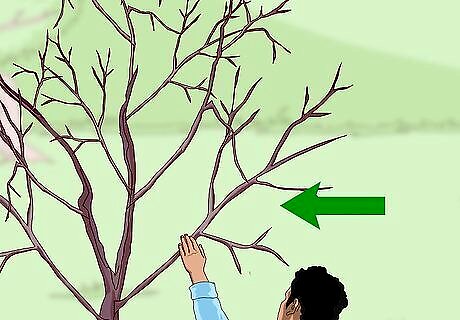
Choose healthy branches that have grown in the past year. Branches that have shown significant growth are ideal, as these are the most likely to give good, healthy cuttings. Pick a few branches that don’t have any disease or insects. The best thickness for cuttings is about a pencil-width. The branch will be woody, rather than soft or green. Generally, the healthier and more vigorous the shoots that you select are, the more likely that the cuttings will be successful.
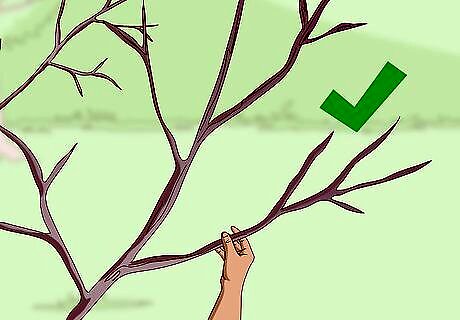
Cut through the branch where the current year’s growth starts. This is where the current season’s growth joins the 2-year-old growth. This section will be mature and woody. Sharp secateurs are the best to use to take cuttings. Snip the unripe, softer, and greener wood, which is at the top of the branch, off the cutting. This part of the branch has the best potential for root development, which means that the cuttings are more likely to be successful. This is because this area has many dormant buds that give hormones to the developing roots.

Cut below the lowest bud at the base on the branch. The cut needs to be approximately ¼ inch (6 mm) below the lowest bud that you can find. Make sure that this cut is horizontal and straight. Buds will look like slightly raised areas that are somewhat different in color from the rest of the branch. You will need to cut the branch in 2 different places to take a cutting. This first cut will be horizontal and closer to the base, and the next cut will be angled and closer to the top of the branch.
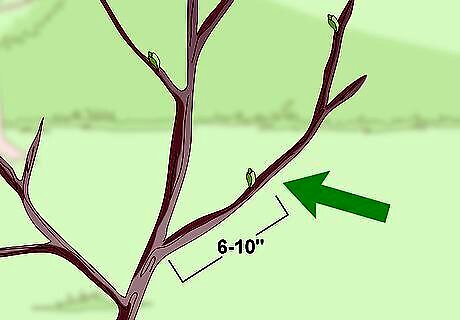
Measure 6 to 10 inches (15 to 20 cm) away from the base of the branch. Find a bud that is within this distance. This is where the top cut will be.
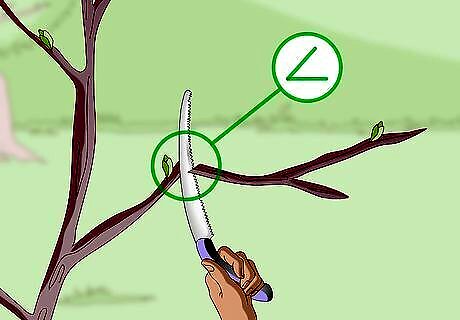
Make an angled cut ¼ in (6 mm) above this bud. Make sure that the cut slopes away from, rather than towards the bud. This will leave behind the best mature wood of the current season’s growth. The distance between the horizontal cut at the base, and the angled cut at the tip will be around 6 to 10 inches (15 to 20 cm), depending on the size of your tree or shrub. Make larger cuttings for larger trees, and smaller cuttings for smaller trees. Remove all the leaves from the cutting before you plant it.
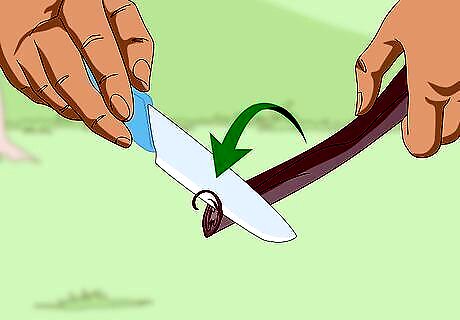
Remove a thin layer of wood from the base of the cutting. Scrape off a thin sliver of bark at the base of the cutting using a knife or secateurs. This will wound the cutting, which makes it more likely to root. This helps to remove a physical barrier which might get in the way when roots start to form.
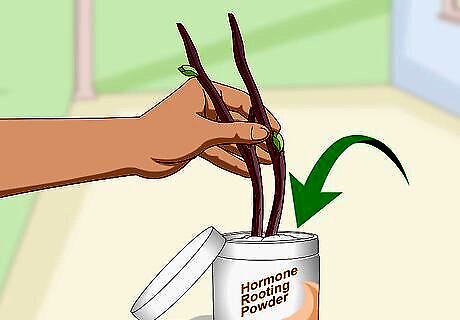
Dip the base of the cutting into hormone rooting powder. This will help to stimulate root growth from the cutting. Simply open the lid of the container, and dip the base of the cutting in. Lightly tap the cutting after it has been dipped into the powder to shake off any excess.
Planting the Cuttings
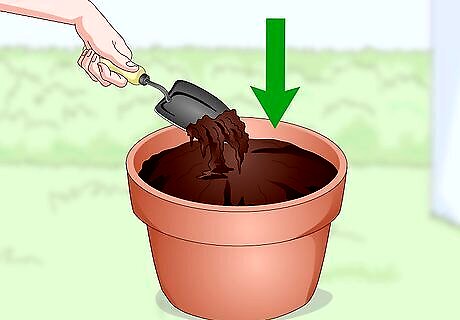
Fill a pot with the propagating medium. Moist, free-draining cutting compost is popular, but if you don't have any on hand, regular potting mix also works. Fill the pot to just below the top. Coarse sand or coconut coir are more alternatives for propagating cuttings. Medium blends are also alternatives for propagating mediums, such as 1 part peat with 1 part perlite, or 1 part peat with 1 part sand.
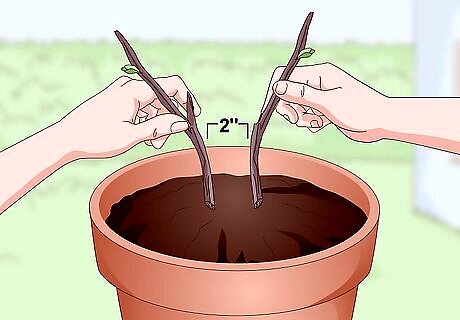
Place the cuttings 2 inches (5 cm) apart in the pot. Depending on the size of the pot, you will probably fit in around 5 cuttings per pot. The edges of the pot are the best place to plant the cuttings.
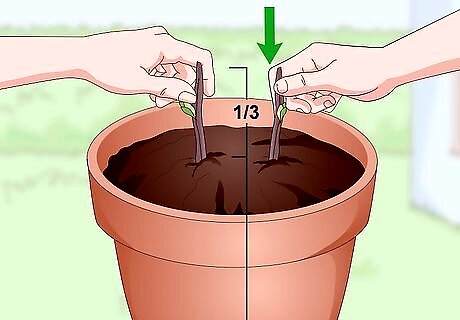
Press the cuttings gently into the soil. Make sure that ⅔ of each cutting is below the soil, with only ⅓ visible at the top. Only the top buds will be visible from above the soil. As you push the cuttings into the soil, make sure that the soil around each one is firmly pressed.
Put the cuttings in a protected location. Find a sheltered, frost-free location in your yard. If you live in a frost-prone area, put the cuttings in a greenhouse or cold frame during the winter.
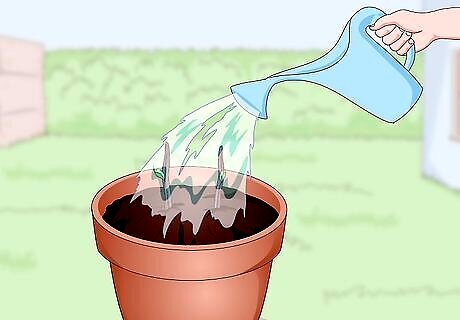
Water the soil regularly. Check on the soil frequently to make sure that it is slightly damp, but avoid overwatering it. You can place the pot in the cold frame of a greenhouse if you have access to one, as this can help to speed up the root formation. Overwatering the cuttings could cause them to rot.
Placing the Cuttings into the Ground after Rooting

Pick a spot with the right conditions for planting the cuttings. Most hardwood species prefer soil that is well-drained and fertile. The amount of sunlight your tree will need varies depending on the species of tree you are rooting. Ash trees grow best in well-drained soil with full sunlight. Oak trees prefer dry soil with full sunlight. Dogwood trees prefer well-drained soil with partial shade.
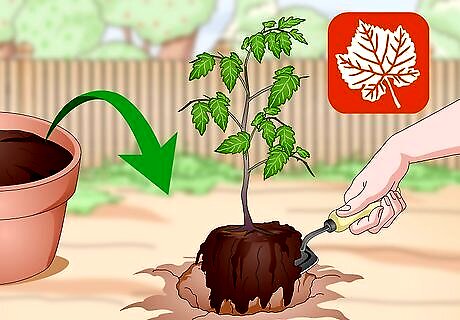
Transplant the cuttings into the ground during the next autumn. Remove the cuttings from the pot, and plant them in your chosen permanent ground location. The larger the cuttings grow before they are transplanted, the greater their chance of success. The cuttings will have well-formed roots by the following autumn, which means that they should be able to survive in the ground. It’s likely that the roots will start to show through the drain holes of the pot by this time, which means that the plant is ready to be transplanted.
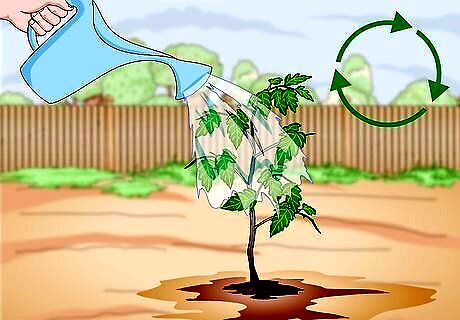
Water the cuttings regularly once they are planted. This will help them to grow and develop, and to take well to their new location. Water the cuttings more often during the following summer to improve their likelihood of success.




















Comments
0 comment